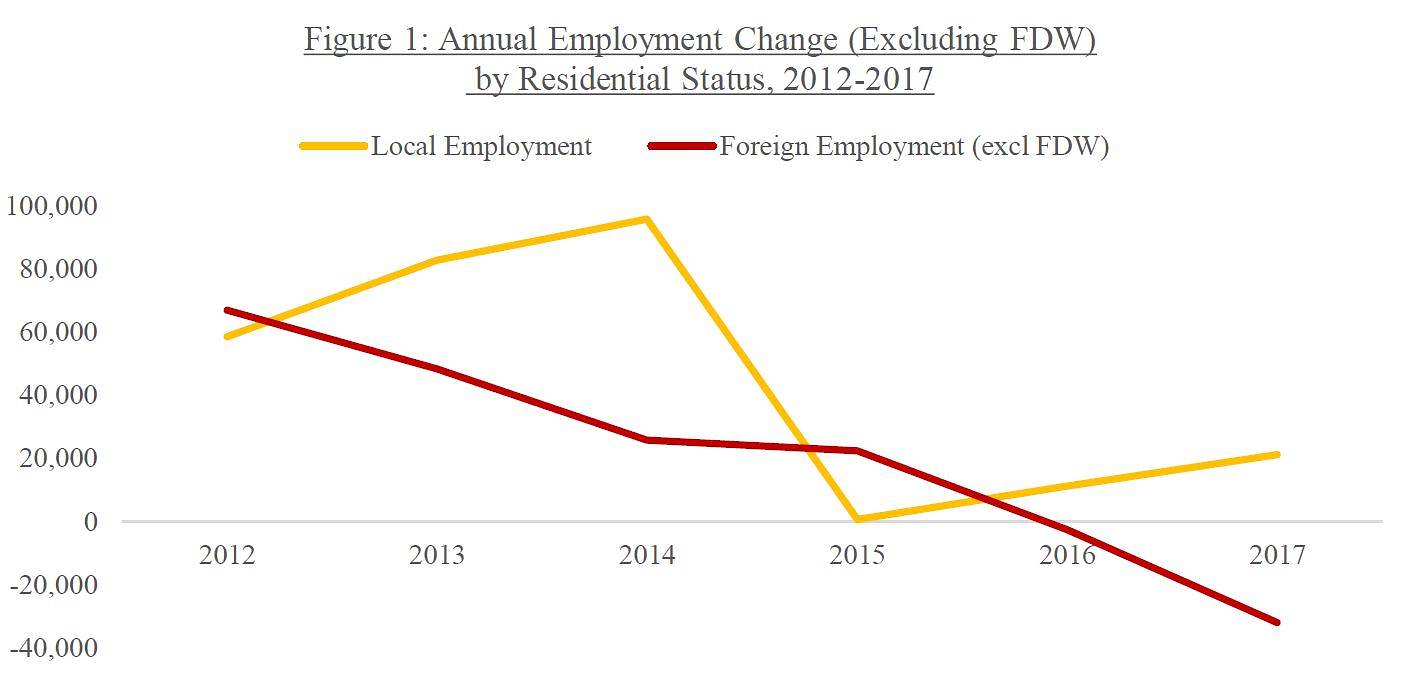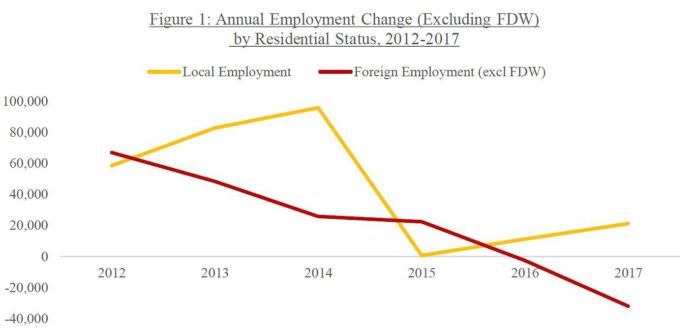SINGAPORE: Local employment grew by 21,300 last year, nearly double the growth in 2016, according to the Ministry of Manpower’s (MOM) 2017 labour market report released on Thursday (Mar 15).
Employment saw growth mainly in sectors with relatively higher shares of professionals, managers, executives & technicians (PMETs).
These include the financial and insurance services, information and communications, professional services as well as healthcare sectors, MOM said.
Additionally, the seasonally-adjusted resident unemployment rate declined over the course of 2017 to 3.0 per cent in December 2017, down from a high of 3.2 per cent the year before.
The decline was across all education groups, except for degree holders, MOM said.
However, the resident long-term unemployment rate remained at 0.8 per cent, unchanged from a year before, the statistics showed.
Meanwhile, foreign employment continued to contract in 2017, declining by 32,000 in 2017 as compared to 2,500 in 2016.
The decline was mainly due to a decrease of 32,200 work permit holders in sectors such as marine shipyard and construction, MOM said.
S Pass holders grew by 4,700, while Employment Pass (EP) holders declined by 4,500. The decline in EP holders was mainly in professional services as well as information and communication sectors which saw growth in local employment, the Ministry added.

(Source: MOM)
On the whole, total employment, excluding foreign domestic workers (FDWs), declined by 10,700 in 2017. With local employment growth and foreign employment both falling in 2017, the local share of total employment, excluding FDWs rose from 66.4 per cent in December 2016 to 67.2 per cent in December 2017.
RETRENCHMENTS ‘SIGNIFICANTLY LOWER’; MORE JOB VACANCIES
The statistics also showed that retrenchments in 2017 declined to 14,720, significantly lower than that the 19,170 in 2016. However, the 2017 figure is higher than between 2011 and 2015 when retrenchments averaged about 12,000.
The main reason for retrenchments in 2017 continued to be business restructuring and reorganisation, MOM said. The Ministry added that Singapore residents remained proportionately less affected, with their share of redundancies, at 61.9 per cent, remaining lower than their share of employment, at 67.2 per cent.
Additonally, the ratio of job vacancies to unemployed persons improved for the fourth consecutive quarter, to 0.92 in December 2017.
There were also more job vacancies in Dec 2017 (49,700), higher than the year before (47,400).
HIGHER CITIZEN INCOME GROWTH AT MEDIAN, 20th PERCENTILE
The statistics showed that the nominal median monthly income from work of full-time employed Singaporeans increased by 5.9 per cent over the year to S$4,050 in June 2017, or 5.3 per cent in real terms.
“This was faster than the growth in June 2016 (nominal: 0.7%, real: 1.3%), and could reflect the pick-up in economic growth and changes in the composition of the labour force,” MOM said.
From 2012 to 2017, real income growth at the 20th percentile of full-time employed Singaporeans (4.3% per annum) was faster than at the median (3.9% per annum), supported by initiatives to raise the incomes of low-wage workers in recent years, the Ministry added.
The report also showed that labour productivity growth in 2017 was more than double that of 2016.
Looking ahead, MOM said it expects local employment to continue to grow this year as the economy is expected to expand between 1.5 per cent and 3.5 per cent, albeit with some continued unevenness across sectors.
“Hiring is expected to remain cautious in sectors such as construction and marine shipyard, while job opportunities will continue to be available in the manufacturing sector as well as the services sectors, particularly infocomms and media, finance and insurance, healthcare, professional services, logistics and wholesale trade,” MOM said.





